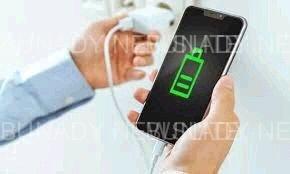IGNORANCE KILLS: Stop Charging Your Phone From 0% To 100%: It Destroys The Battery—Here’s What To Do
Charging your smartphone from 0% to 100% might seem efficient, but it can negatively impact your battery’s longevity. Most modern smartphones use lithium-ion batteries, which are sensitive to complete charge cycles, high temperatures, and voltage stress.
Regularly charging from empty to full can degrade battery capacity and shorten its lifespan over time. Here’s why charging to 100% from 0% can harm your battery and tips on adopting better charging practices.
Why Charging from 0% to 100% Affects Battery Life
Lithium-ion batteries operate best within a moderate charge range. Charging a battery all the way from 0% to 100% pushes it to its extremes, accelerating the chemical reactions inside that eventually cause it to degrade. Each time you charge from 0% to 100%, you complete a full discharge cycle, which shortens battery life. Typically, lithium-ion batteries are rated for around 300-500 full cycles before they experience a notable drop in capacity.
When a battery approaches full charge, it starts receiving a slower current to avoid overcharging—a process known as trickle charging. While this prevents immediate damage, keeping a battery at 100% for prolonged periods (like leaving your phone plugged in overnight) causes stress and may generate heat, both of which contribute to wear. Allowing a battery to fully discharge down to 0% is also risky; repeated deep discharges can lower its voltage, potentially leading to permanent damage.
Optimal Charging Practices to Preserve Battery Health
To enhance battery life, try to maintain the charge level between 20% and 80%. This range helps reduce battery strain, avoids deep discharges, and minimizes time spent trickle charging.
Consider these practical tips for healthier charging habits:
1. Avoid Full Discharge Cycles: Instead of waiting for the battery to drain to 0%, plug in your phone when it reaches around 20%, and unplug it once it reaches around 80-90%. This habit minimizes time at high voltage levels.
2. Enable Battery-Saving Features: Many smartphones now offer settings that optimize charging, such as stopping the charge at a lower threshold or slowing the charging speed. Check your phone’s battery settings for options to protect battery health automatically.
3. Refrain from Overnight Charging: Leaving your phone plugged in overnight keeps it at full charge for hours, accelerating wear. If you need to charge overnight, consider setting a timer or using a smart plug to disconnect power after a few hours.
By adopting these charging practices, you can help your smartphone battery retain its capacity and last longer, avoiding the inconvenience of a deteriorating battery over time.

